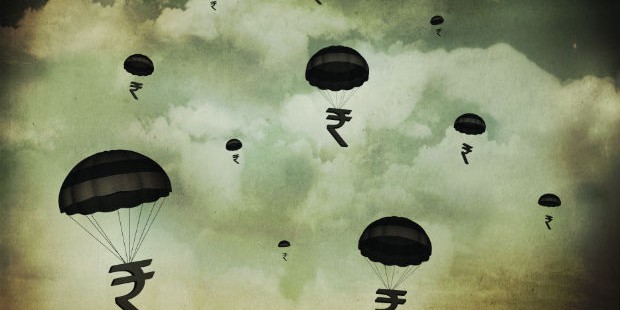India faces a financial crisis and falling of our domestic currency ( owing alot to the Euro-crisis) is just one of the indications. In the past year, it has fallen by around 26% affecting the country’s imports.In such cases, only the central bank intervenes and that is exactly what India’s central Bank (RBI) has been doing.On June 17th 2012, RBI left the interest rates unchanged and put the market in dismay. At this point in time, India is facing some major changes like slow growth, high inflation, falling of the rupee, slowdown of Foreign Investment Inflow and Balance of payment problems.
In 1980’s, India started facing Balance of Payment problems which slowly turned into a big economic crisis by 1990.New credits were not allowed, the government was about to default and only 3 week’s imports could be supported.  The problems faced during that period of time were big fiscal deficits, balance of payments and slump in exports. India had to borrow from International Monetary Fund(IMF) by pledging its gold reserves. Mid-1990 followed wide adjustments in exchange rate, depleted foreign reserves and sharp depreciation of Indian currency. Liberalization was brought in as economic reform by the Dr. Manmohan Singh, the finance minister in those years. Little do we know that the economic reforms were a part of the IMF bailout whereby gold was given to London and our currency was allowed to get devalued.This followed low tariffs, taxes, duties and paved a free way for private firms to step in. Slowly, we got more globalized in trade and global competition was allowed.
The problems faced during that period of time were big fiscal deficits, balance of payments and slump in exports. India had to borrow from International Monetary Fund(IMF) by pledging its gold reserves. Mid-1990 followed wide adjustments in exchange rate, depleted foreign reserves and sharp depreciation of Indian currency. Liberalization was brought in as economic reform by the Dr. Manmohan Singh, the finance minister in those years. Little do we know that the economic reforms were a part of the IMF bailout whereby gold was given to London and our currency was allowed to get devalued.This followed low tariffs, taxes, duties and paved a free way for private firms to step in. Slowly, we got more globalized in trade and global competition was allowed.
These policies are adopted till date but would work only if the government and the political parties do away with the blame game and vested interests. Corruption and political instability ruins matters further and leaves little room for discussion.In order to correct the rupee depreciation, the RBI announced to raise the limit of investment in G-Secs (Government Securities) by Foreign Institutional Investment (FIIs) from $15 billion to $20 billion.
Today, the focus of the Central Bank (like any other central bank of any country) is to correct inflation (by continuously increasing rates) and improve growth ( by decreasing rates). Oil price inflation and large gold imports have given rise to a bigger problem of Balance of payments (BoP) crisis which is also called the currency crisis.This is further aggravated by a decline in capital flows, reflecting a loss of market confidence.With contradictory credit ratings by credit rating agencies, (Moody’s affirming ‘stable’ rating and Fitch and Standard & Poor’s (S&P) lowering to a ‘negative’) RBI is trying its best to make sure there are more inflows and ways are made to increase the growth rate of the country. One needs to remember that in 1990, it was under the reforms by today’s Prime Minister ,Dr. Manmohan Singh, one of the most influential architects of India’s socialist economy,that got India out of a big crisis. Today June 26th 2012, he decides to keep the finance portfolio. It would be worth a watch how India gets out of its present slow growth and suppressed domestic currency in 2012 under his guidance and actions.
© 2012 Deena Zaidi. All rights reserved.
